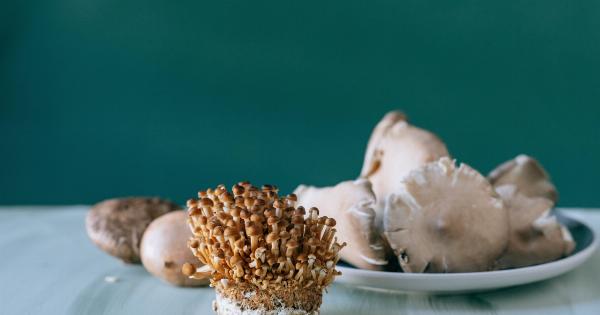Incontinence is a common condition that affects millions of people around the world. It can cause embarrassment, discomfort, and even anxiety, which can affect one’s quality of life.
However, there are several ways to manage incontinence to improve your daily life. Here are some tips and strategies:.
1. Know the Types of Incontinence
There are several types of incontinence, including stress incontinence, urge incontinence, overflow incontinence, functional incontinence, and mixed incontinence. Understanding your type of incontinence is crucial in managing the condition.
For instance, stress incontinence, which occurs when you laugh, cough, or sneeze, is managed differently from urge incontinence, which is characterized by a sudden urge to urinate.
2. Kegel Exercises
Kegel exercises help strengthen your pelvic floor muscles, which plays a significant role in bladder control. These exercises involve contracting and relaxing your pelvic floor muscles, which are the same muscles used to stop urination midstream.
To do Kegel exercises, squeeze your pelvic floor muscles for five seconds, release for five seconds, and repeat ten times. Do this exercise regularly for best results.
3. Diet Modifications
Foods and drinks such as caffeine, alcohol, artificial sweeteners, spicy foods, and citrus fruits and juices can irritate the bladder, leading to incontinence. Reducing or eliminating these items from your diet may help reduce episodes of incontinence.
Drinking plenty of water is vital to keep your bladder healthy and hydrated. It may seem counterintuitive, but limiting your fluids can worsen incontinence.
4. Bladder Training
Bladder training can be helpful for individuals with urge incontinence. This strategy involves delaying the urge to urinate. Start by waiting five to ten minutes before using the restroom, then gradually increase the time.
Over time, your bladder will learn to hold more urine, and your urge to urinate will decrease. Bladder training may take some time, but it can often lead to significant improvements in urinary control.
5. Use Incontinence Pads or Products
Incontinence pads or products can help manage incontinence while on the go, at work, or during sleep. These products come in various sizes, shapes, and absorbency levels, so you can choose one that best suits your needs.
Using incontinence products can help you be more confident and comfortable while dealing with incontinence.
6. Medications
In some cases, medications can be helpful in managing incontinence. Medications such as anticholinergics, beta-3 agonists, alpha-blockers, and topical estrogen may help reduce episodes of incontinence.
However, medications should be used under the guidance of a medical professional, as they may have potential side effects and interactions with other medications.
7. Surgery
If all other strategies fail, surgery may be an option for individuals with severe incontinence. Procedures such as bladder suspension, sling procedures, or artificial urinary sphincter implantation may help improve urinary control.
However, surgery is typically reserved for individuals with severe incontinence whose quality of life is significantly affected.
8. Seek Support
Dealing with incontinence can be overwhelming, lonely, and embarrassing. Seeking support from friends, family, or a support group can help alleviate some of these feelings.
You may also consider working with a mental health professional to help you manage the emotional and psychological aspects of incontinence.
9. Keep a Journal
Keeping a journal can be helpful in tracking your episodes of incontinence, identifying triggers, and understanding patterns. You can record the date, time, and severity of each episode, as well as what you were doing at the time.
This information can help you and your healthcare provider better understand your condition and develop an effective management plan.
10. Talk to your Healthcare Provider
If you are experiencing incontinence, it is crucial to speak with your healthcare provider. They can help you identify the cause of your incontinence and develop a personalized management plan.
Your healthcare provider may also recommend a combination of strategies, such as Kegel exercises, bladder training, and diet modifications, to improve your condition.
Conclusion
Incontinence can be challenging to manage, but there are several strategies and tips you can use to improve your daily life.
Understanding your type of incontinence, doing Kegel exercises, modifying your diet, bladder training, using incontinence products, considering medications or surgery, seeking support, keeping a journal, and talking to your healthcare provider are all ways to manage incontinence and improve your quality of life.





























